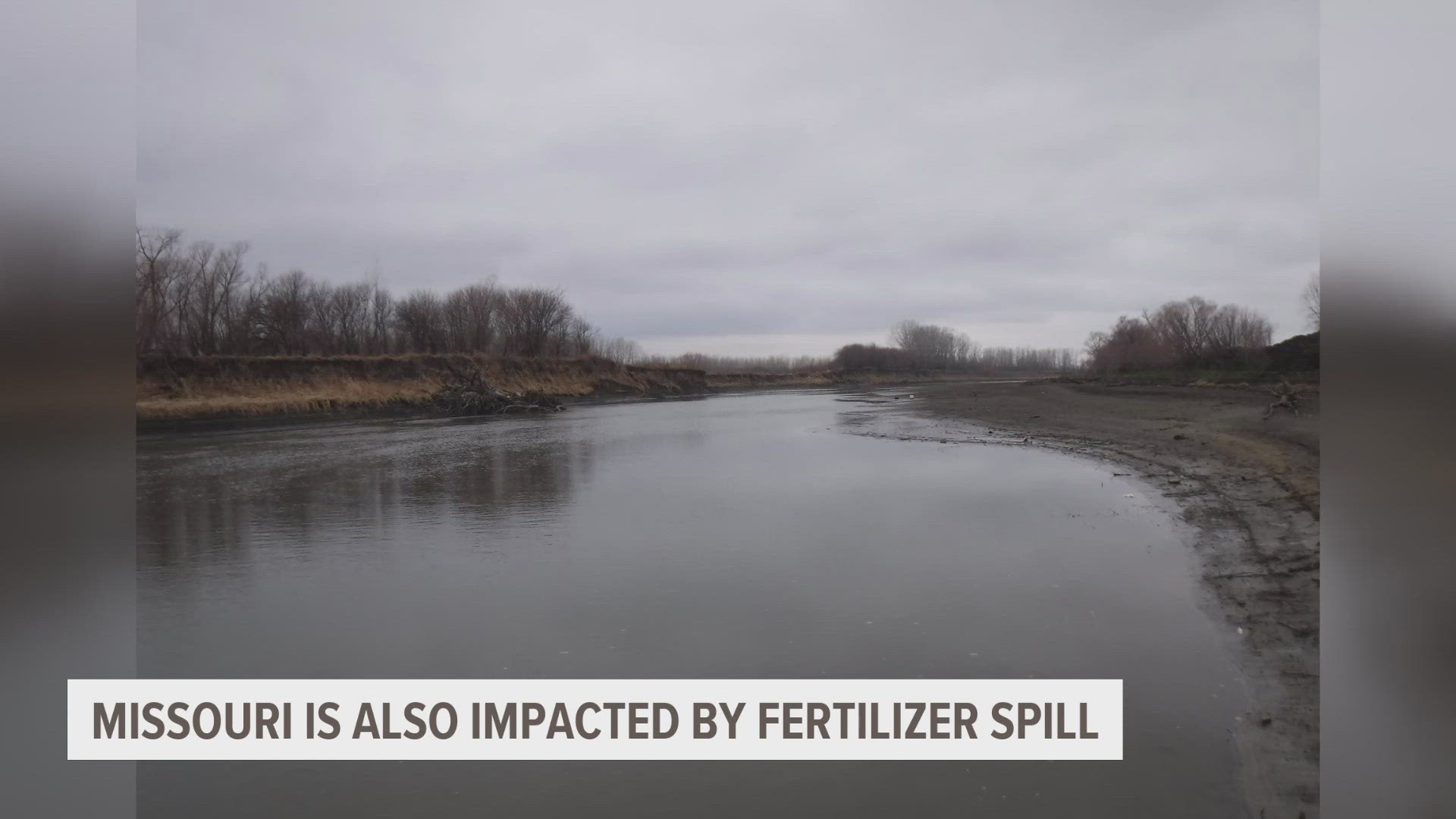MONTGOMERY COUNTY, Iowa — The Iowa Environmental Protection Commission has voted to refer the company responsible for March’s historic fertilizer spill in the East Nishnabotna River to the attorney general.
The spill killed almost 750,000 fish in Iowa, but the impact doesn’t stop there. Missouri is also grappling with its aftermath.
In fact, the Missouri Department of Natural Resources' Joe Clayton, who serves as the chief of compliance and enforcement for the water pollution control branch, says the fertilizer made its way from the Nishnabotna River to the beginning of the Missouri River at lethal levels. Nonlethal levels were detected even deeper into the state.
He added that, according to preliminary data, about 4,000 fish in Missouri died.
One of Missouri DNR's first water samples after the event showed ammonia levels reaching about eight times the legal limit.
“Our water quality criteria for ammonia. . . it can’t exceed 6.9 milligrams per liter," Clayton said.
It could take five years for fish populations to go back to where they were before, Clayton estimates.
He explained that Missouri doesn't have fish hatcheries to replenish the population with, but they do take on habitat restoration to help the fish repopulate naturally.
“Due to the significance of this event that caused the death of aquatic life, that is an immediate referral to compliance and enforcement," he added.
Clayton says Missouri DNR will be issuing multiple fines to NEW Cooperative Incorporated, the company responsible for the spill.
That includes penalties for the monetary value of the fish killed, the cost to conduct the investigation and punishment for violating clean water laws. Some of that money will go toward habitat restoration.
When it comes to cleanup, Clayton says there's not much officials could do, pointing to the speed at which the fertilizer moved downstream as well as how fast it diluted.
"The impact is done immediately and then dilutes fairly rapidly," he explained.
Clayton says, despite some initial concerns, officials don’t have any reason to believe Missouri’s drinking water has been impacted.

